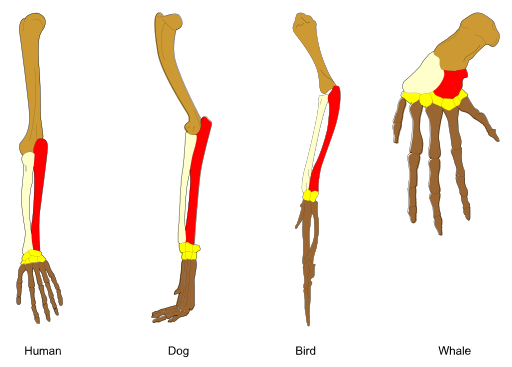Evidence for Evolution - Weekly Blog (10/22-10/28)
 |
| File:Homology vertebrates-en.svg by Волков Владислав Петрович |
SP2: Developing and Using Models
This week, we used models to show the bone structure of various organisms. This made it easier to see the similarities and differences with comparative anatomy. Using models made it easier to see the evolution taking place by studying the comparative anatomy. In class, we also used models to show the embryology and development of various organisms. By using models, I have learned a lot about evidence for evolution, and how that can help scientists learn more about our common ancestors.
XCC: Patterns
By using various patterns that have happened in nature, we can compare the similarities and differences in various organisms. For example, we can use the patterns in DNA to use DNA comparisons to see the similarities in the DNA so that we can learn more about how closely related various species are. Based on this pattern, scientists can make predictions about our common ancestors, and which species humans are closely related to. By discovering patterns, I have learned more about evolution and how we can use evidence to learn more.
Comments
Post a Comment